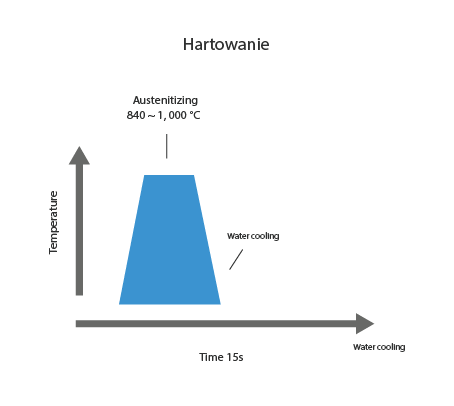A heat treatment process in which a component is heated to an appropriate temperature (above the recrystallisation temperature but below the melting point), held at that temperature to homogenise and restructure it, and then rapidly cooled.

Quenching
pl.
Type of technology
Development phase
Level of innovation
Scale of production
mass
Technology readiness level TRL
Description of the technology
Purpose of use
increasing strength and hardness of the workpieces
Industry usage
automotive, tool industry
Alternative technologies
- none
Visualisation of action
Advantages
- increases the hardness of the material
- improves the strength of the metal
- improves the wear resistance of the metal
- can improve the corrosion resistance of the metal
- can improve the electrical conductivity of the metal
Disadvantages
- can cause deformation of the metal
- can cause internal stresses that can lead to cracking
- can make the metal harder than necessary (making it more difficult to machine)
- can cause the metal to become brittle and crack more easily
Workpiece material types
- steel
Examples of products
- kitchen utensils
- automotive parts
- tools subject to heavy wear
- engineering parts that must withstand heavy loads
- brackets
- nuts
- bolts
- hooks
- nails
- screws
- hand tools (e.g. hammers and screwdrivers)
- springs
- bearings
Implementation of the technology
Required resources
- quenching furnace
- quenching bath
Required competences
- on-the-job training
Environmental aspects
Expert evaluation
Development centers
- AGH University of Krakow
- Institute of Metallurgy and Materials Science of Polish Academy of Sciences
- Warsaw University of Technology
- Cracow University of Technology
- Łukasiewicz – Upper Silesian Institute of Technology
- Czestochowa University of Technology
Legal conditions
- none
